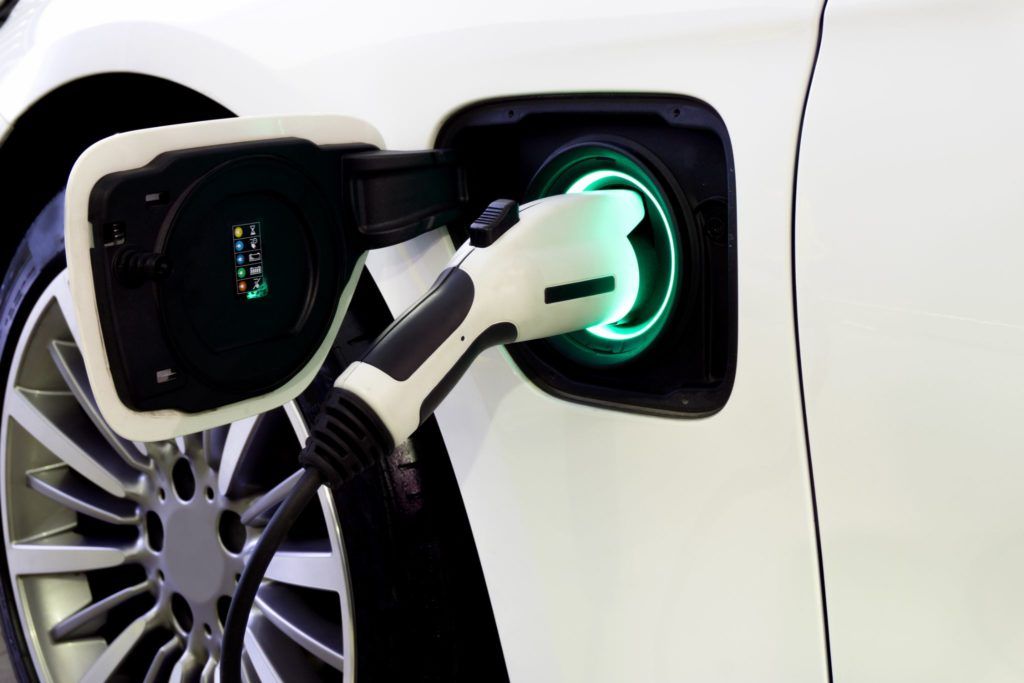Charging an electric vehicle should be convenient, straightforward, and inexpensive – according to a report published by the Transport Select Committee.
A clear policy framework is essential to ensure that industry can deliver the vehicles and charging infrastructure required to deliver the Government’s ambition, much of which has been set out in the recently published Transport Decarbonisation Plan.
In the report entitled ‘Zero emission vehicles‘, published today (28 July), MPs on the Transport Committee deliver a set of recommendations to Government to boost the production and purchase of electric vehicles as the net zero deadline approaches.
Questions remain on whether the Government’s current plans are enough to deliver the public charging infrastructure needed across all regions of the UK and whether it will benefit everyone, says the report.
Accessible and reliable charging infrastructure must be available by 2030 but drivers who live in rural or remote areas or who don’t have off-street parking risk being left behind.
Unless charging habits change, or the National Grid is strengthened, concerns exist that the charging needs from millions of new electric vehicles will cause blackouts to parts of the country.
In order to increase the uptake of zero emission vehicles (ZEVs), the Transport Select Committee says the Government will need to incentivise car manufacturers to sell an increasing number of ZEVs through a ZEV mandate. However, it must adopt a technology-neutral approach to the transition to ZEVs and explore the potential of alternative fuels, such as hydrogen or other alternatives to petrol and diesel, where possible.
MPs have made a number of recommendations in the report. The Transport Committee is appointed by the House of Commons to examine the expenditure, administration, and policy of the Department for Transport and its associated public bodies.
They say the Government must:
- Work with the National Grid to map national coverage to eradicate ‘not-spot’ areas and identify locations where the Grid will not cope with additional usage
- Protect the consumer from excessive charges and multiple accounts when charging in public
- Insist that industry uses price to change consumer charging behaviour to a ‘little but often’ approach and at times when the National Grid can meet total demand
- Boost the manufacturing and sales of new electric vehicles by requiring those who sell the fewest electric vehicles to buy credits from those who produce the most; such credit to then be used to reduce the purchase price of electric vehicles (the ‘ZEV Mandate’).
- Support sub-national transport bodies and local authorities to deliver sufficient and well-maintained charging infrastructure solutions tailored to local needs;
- Ring-fence a portion of the £90 million local charging scheme so local authorities can employ dedicated ‘charge point champions’ to deliver local charging infrastructure strategies;
- Identify and address under-provision at locations outside the strategic road network, where grid connection costs and grid upgrades are expensive and the business case for investment is weak;
- Amend the wayleave regime for installing charging infrastructure to ensure that that regime does not act as a barrier to roll-out;
- Address the discrepancy between the 5% VAT incurred for home charging and 20% VAT for on-street.
When it comes to managing energy demand and smart charging, the Government must mandate that industry uses price as a lever to move consumer behaviour away from conventional refuelling habits towards ‘a little but often’ approach.
In order to make electric vehicles more affordable, the Committee says a healthy used electric vehicle market is critical to ensuring that electric vehicles are not the sole preserve of people who can afford new models.
The report goes on to say: “The Government’s position is that current incentives to stimulate the sale of new EVs are sufficient to support the development of the second-hand EV market. However, electric vehicles that will be traded on the second-hand market in three to five years’ time are likely to be more expensive to buy upfront than comparable ICE models. To drive mass consumer uptake of ZEVs, the Government must ensure that the market facilitates the supply of affordable new and used electric vehicles.
“In order to ensure that the Government achieves the targets set out in the Transport Decarbonisation Plan, it may need to intervene to support the second-hand market in electric vehicles until price parity with comparable ICE vehicles is reached.“
A ZEV mandate would be a cost-effective way in which to support the uptake of ZEVs compared with taxpayer-funded incentives.
In order to achieve its 2030 and 2035 targets, the Government must introduce a ZEV mandate to incentivise manufacturers to sell an increasing proportion of ZEVs or to purchase tradeable credits year-on-year, reaching some 100% ZEV sales by 2030.
The Committee also wants to see much greater support for councils when it comes to adopting charging infrastructure.
As part of its electric vehicle charging infrastructure strategy, the Committee says the Government must explain:
- a) How it will support all regions and local authorities to deliver sufficient and well-maintained charging infrastructure solutions tailored to local needs, so that no area is left behind; and
- b) How it will ensure that the roll-out of charging infrastructure keeps pace with the increase in EVs and that the right types of chargers are in the right locations.
And to facilitate the roll-out of charging infrastructure, the Government must:
a) Use the upcoming Planning Bill to make public charge point provision a requirement of local plans;
b) make funding for the on-street residential charging scheme dependent upon local authorities having detailed charge point plans in place which support rapid charging options; and
c) ring-fence a portion of the £90 million local charging scheme to allow local authorities to employ dedicated ‘charge point champions’ to deliver local charging infrastructure strategies.
The Government must work with National Grid to map the electricity network to assess potential weak areas, especially in rural locations, and to develop a plan to prevent ‘not-spots’ from emerging similar to those during the roll-out of broadband and mobile coverage.
Whilst the Committee welcomes the rollout of Project Rapid, which specifies the number of charge points on the strategic road network by 2023 and beyond, it describes the spending priorities for the £950 million rapid charging fund as “obscure”.
The report adds: “Given the time and expense involved in upgrading grid connections, it is crucial that this money is distributed to unlock investment, provide fully future-proofed grid capacity and secure public confidence in charging infrastructure.”
The Committee says the electric vehicle charging infrastructure strategy must set out:
- a) How the £950 million rapid charging fund will be spent to facilitate the implementation of charging infrastructure; and
- b) The measures that the Government is taking to identify and address under- provision at locations outside the strategic road network, where grid connection costs and grid upgrades are expensive and the business case for investment is weak.
And when it comes to managing energy demand and smart charging, the Committee welcomes the Government’s commitment to mandate that all new private charge points should be equipped with smart functionality and to introduce the relevant legislation later in 2021.
It says the Government must mandate industry to:
- a) Use price as a lever to shift consumer behaviour away from conventionalrefuelling habits towards ‘a little but often’ approach; and
- b) Incentivise consumers to charge at times when there is less demand on the electricity grid.
Chair of the Transport Committee, Huw Merriman MP said: “As car usage returns to pre-pandemic levels, we must keep our sights locked on the target: all new cars and vans should be electric by 2035 at the latest. To help consumers see their route to a zero emission world, choosing to run an electric vehicle must be as seamless as possible. Today we offer a set of recommendations to help Government hit the accelerator on its ambition.
“Putting guarantees in place on infrastructure is crucial but one report after another flags concerns to Government about the provision of electric car charging infrastructure. Let ours be the last: it’s time that ministers set out the route map to delivering a network of services for everyone across the UK.
“The Government’s inclusion of a ZEV mandate in a recent consultation is welcome but not enough on its own. Charging electric vehicles should be convenient, straightforward and inexpensive and drivers must not be disadvantaged by where they live or how they charge their vehicles. Shifting the subsidy from the taxpayer to the manufacturer will incentivise those who deliver the fewest electric vehicles in our showrooms to up their game.
“Unless the National Grid gains more capacity, consumer behaviour will have to alter so that charging takes place when supply can meet the additional demand. The alternative will be blackouts in parts of the country. We also cannot have a repeat of the broadband and mobile ‘not spot’ lottery which would mean those in remote parts cannot join the electric vehicle revolution.”
The report notes that the move to electric vehicles can only be one strand in the UK’s net zero ambitions. The Government has now published its Transport Decarbonisation Plan and further papers are expected. Having considered zero emission vehicles, the Committee will turn its attention to road pricing. The Committee will continue to scrutinise government work in this area, particularly in the run up to the UK hosting COP26 in the Autumn.
You can read the full report here.
Image: Shutterstock








